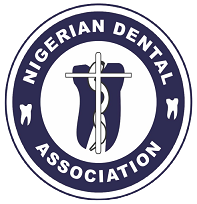Microbial Analysis and Antimicrobial Susceptibility of Microorganisms Associated with Teeth Indicated for Non-Surgical Endodontic Treatment in a Nigerian Population-A Cross-Sectional Study
DOI:
https://doi.org/10.61172/f6h0ee97Keywords:
endondontics, microbiology, antibiotics, root canal treatmentAbstract
Background
The success of endodontic therapy hinges on the eradication of microbial infection within the root canal system. Regional variations in microbial ecology and antibiotic resistance underscore the need for population-specific data to guide clinical protocols.
Objective
To characterize the microbial composition and antimicrobial susceptibility profiles of microorganisms isolated from root canals of teeth indicated for non-surgical endodontic treatment in a Nigerian cohort.
Methods
In this cross-sectional study, root canal samples were aseptically collected from 40 patients using sterile paper points after irrigation with saline. Specimens were cultured on Sabouraud dextrose, MacConkey, Nutrient, and Blood agar under aerobic and anaerobic conditions. Microbial identification was performed via biochemical assays, and antibiotic susceptibility testing was conducted using the Kirby-Bauer disc diffusion method.
Results
Among 97 isolates, facultative anaerobes predominated (43.2%, n = 42), followed by fungi (38.2%, n = 37) and obligate aerobes (18.6%, n = 18). Staphylococcus spp. (44.4%) was the most prevalent aerobic bacteria, while Streptococcus spp. dominated both facultative (61.9%) and obligate anaerobic isolates. Yeasts constituted 64.9% of fungal isolates. All bacterial isolates exhibited resistance to co-trimoxazole. Resistance to ampicillin was universal among aerobes and anaerobes except Bacteroides spp. Aerobes demonstrated high sensitivity to gentamicin (100%), nalidixic acid (88.9%), and nitrofurantoin (94.4%), with exceptions observed in Klebsiella and Streptococcus spp. Anaerobes showed susceptibility to nitrofurantoin (95.2%) and gentamicin (90.5%), excluding Bacillus spp. Streptomycin resistance was widespread (95.2%) except in Pseudomonas spp.
Conclusion
Root canal infections in this population exhibit polymicrobial diversity with significant resistance to ampicillin and co-trimoxazole, rendering these agents ineffective. Gentamicin, nitrofurantoin, and nalidixic acid demonstrated superior efficacy, highlighting their potential utility in managing refractory infections. These findings advocate for antimicrobial stewardship and susceptibility-guided therapy in Nigerian endodontic practice.
Downloads
References
1.Fidgor D, Gulabivala K. Survival against all odds; microbiology of root canals associated with post-treatment disease. Endod Topics 2011;18:62-772.
2.Kakehashi S, Stanley HR, Fitzgerald RJ. The effects of surgical exposures of dental pulps in germ-free and conventional laboratory rats. Oral Surg Oral Med Oral Pathol. 1965;20:34093.
3.Narayanan LL, Vaishnari C. Endodontic microbiology. J Conserv Dent 2010;13:233-2394.
4.Wong J, Manoil D, Nasman P, Belibasaki GN, Neelakatan P. Microbiological aspects of root canal infections and disinfection strategies: An update review on the current knowledge sand challenges. Front Oral Health 2021;2:6728875.
5.Siqueria Jr JF, Rocas IN. Diversity of endodontic microbiota revised. J Dent Res 2009;88:969-9816.
6.Ng YL, Mann V, Rahbaran S, Lewsey J, Gulabivala K. Outcome of primary root canal treatment: systematic review of the literature - part 1. Effects of study characteristics on probability of success. Int Endod J. (2007) 40:92139. 10.1111/j.1365-2591.2007.01322.x7.
7.Restrepo-Restrepo FA, Canas-Jimenez SJ, Romero-Albarracin RD, Villa-Machado PA, Perez-Cano MI, Tobon-Arroyave SI. Prognosis of root canal treatment in teeth with preoperative apical periodontitis: a study with cone-beam computed tomography and digital periapical radiography. Int Endod J. (2019) 52:153346. 10.1111/iej.131688.
8.Grossman LI. Polyantibiotic treatment of pulpless teeth. J Am Dent Assoc. (1951) 43:26578. 10.14219/jada.archive.1951.02139.
9.Al-Ahmad A, Pelz K, Schirrmeister JF, Hellwig E, Pruckner S, Konrad R, et al. Molecular and Cultivation based investigation of the microflora of root filled teeth with periradicular lesions. J Endod. 2013;39(12):1559-6410.
10.Rocas IN, Siqueira JF Jr. Comparison of the bacterial composition of acute and chronic endodontic infections using checkerboard DNA-DNA hybridization and 16s rRNA gene sequencing techniques. J Endod.2011;37(7):1044-5211.
11.Nazi SA, Clarke D, Do T, Gilbert SC, Mannocci F, Beighton D. An investigation of the presence of Enterococcus faecalis in root canals of teeth requiring endodontic treatment in a UK population. Int Endod J. 2016;49(3):273-8112.
12.Sundqvist G. Bacteriological studies of necrotic dental pulps. Available from http://www.divaportal.org/smash/get/diva2:719968/FULLTEXT02. Last accessed November 27, 202313.
13.Carlsson J, Frolander F, Sundqvist G. Oxygen tolerance of anaerobic bacteria isolated from necrotic dental pulps. Acta Odont Scand 1977;35:139-14514.
14.Barrow GI, Feltham RKA editors. Theory and practice of bacterial identification. In Cowan and Steels manual for the identification of medical bacteria. 3rd ed Cambridge University Press;1993 :p 46-915.
15.Crawford JJ, Shankle JK. Application of newer methods to study the importance of root canal and oral microbiota in endodontics. Oral Surg Oral Med Oral Pathol 1961;14:1109-112316.
16.Drucker DB, Natsiou I. Microbial ecology of the dental root canal. Microb Eco Health Dis 2000;12:160-16917.
17.Fabricius L, Dahlén G, Holm SE, Möller AJR. Influence of combinations of oral bacteria on periapical tissues of monkeys. Eur J Oral Sci. (1982) 90:2006. 10.1111/j.1600-0722.1982.tb00728.x18.
18.Fabricius L, Dahlen G, Ohman AE, Moller AJ. Predominant indigenous oral bacteria isolated from infected root canals after varied times of closure. Scand J Dent Res. (1982) 90:13444. 10.1111/j.1600-0722.1982.tb01536.x19.
19.Siqueira JF, Jr, Rôças IN. Clinical implications and microbiology of bacterial persistence after treatment procedures. J Endod. 2008; 34:1291301 e1293. 10.1016/j.joen.2008.07.02820.
20.Hashioka K, Yamasaki M, Nakane A, Horiba N, Nakamura H. The relationship between clinical symptoms and anaerobic bacteria from infected root canals. J Endod 1992; 18: 558-6121.
21.Sen BH, Piskin B, Demirci T. Observation of bacteria and fungi in infected root canals and dentinal tubules by SEM. Endod Dent Traumatol 1995; 11: 6-9.
Downloads
Published
Issue
Section
License
Copyright (c) 2025 Okeoghenemaro Gloria. Agboghoroma, Dr. Joan Emien

This work is licensed under a Creative Commons Attribution 4.0 International License.
Open Access Statement
- We became fully Open Access since January 2023.
- Our new and archived materials are available free of charge on open basis and under a Creative Commons license as stated below.
Copyright statement
Copyright © 1999 The authors. This work, Nigerian Dental Journal by Nigerian Dental Association is licensed under Creative Commons Attribution 4.0 International License.

